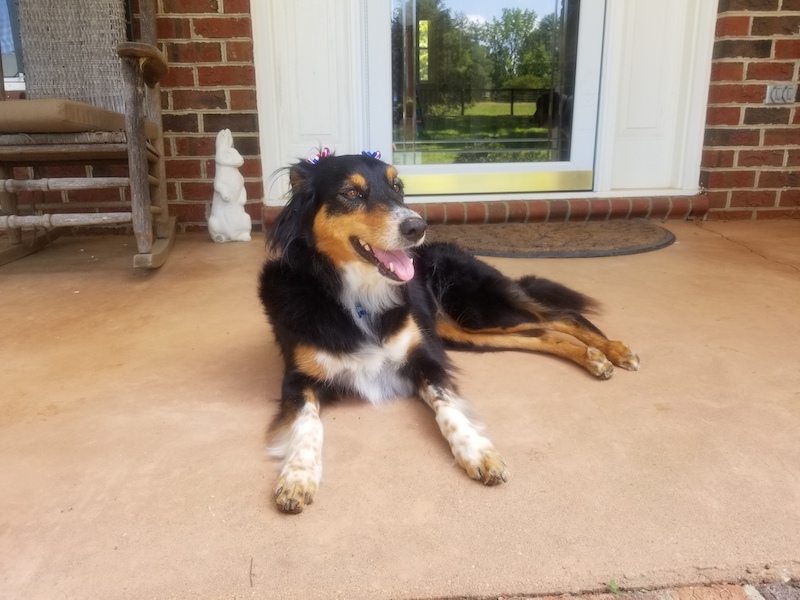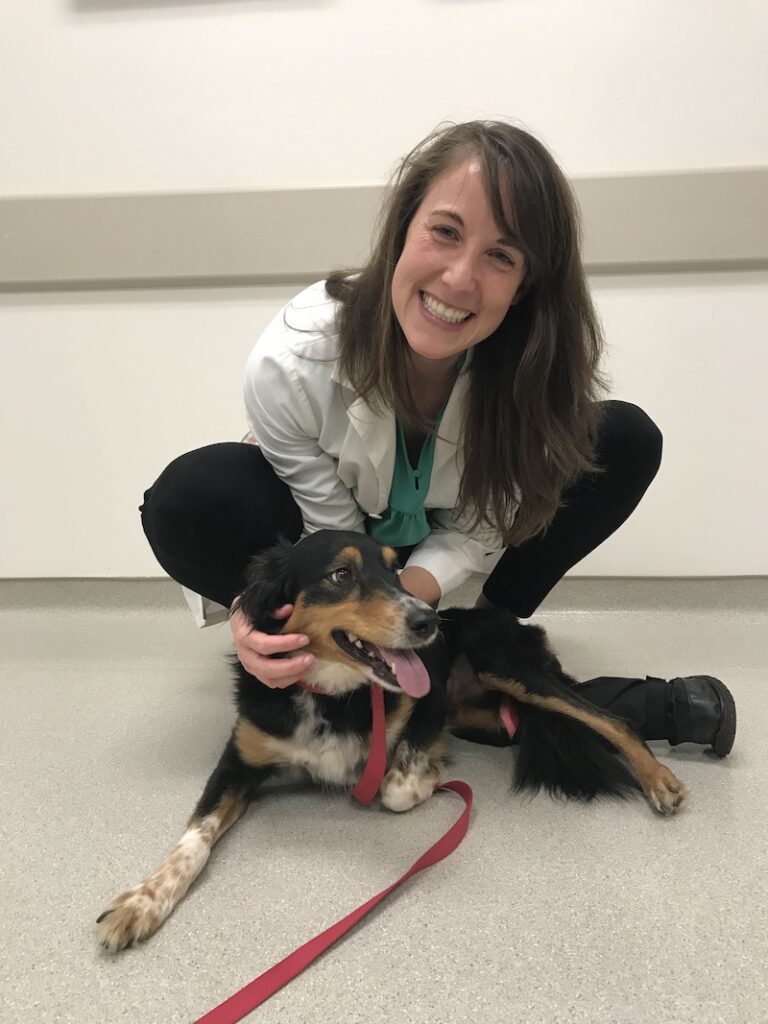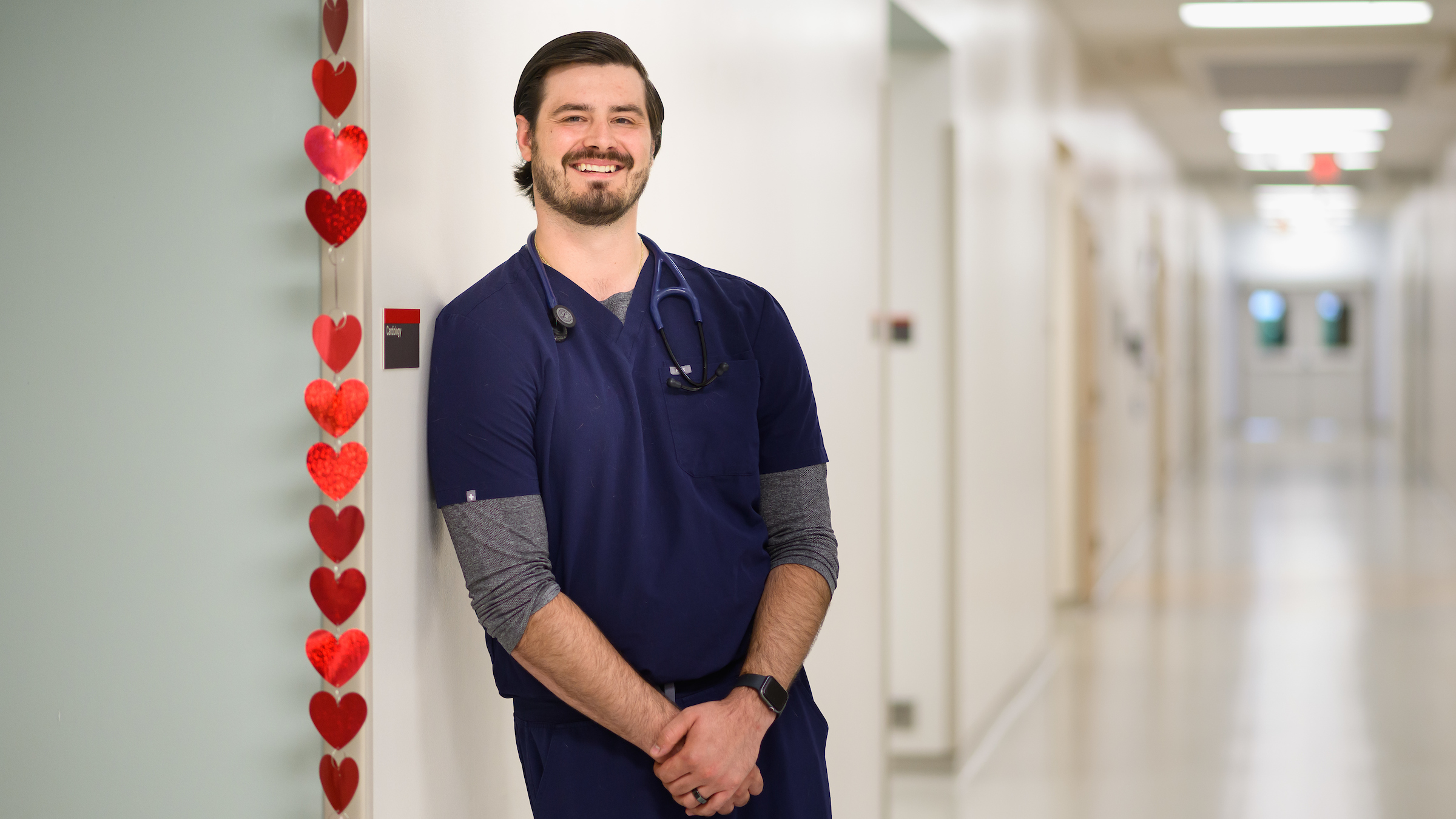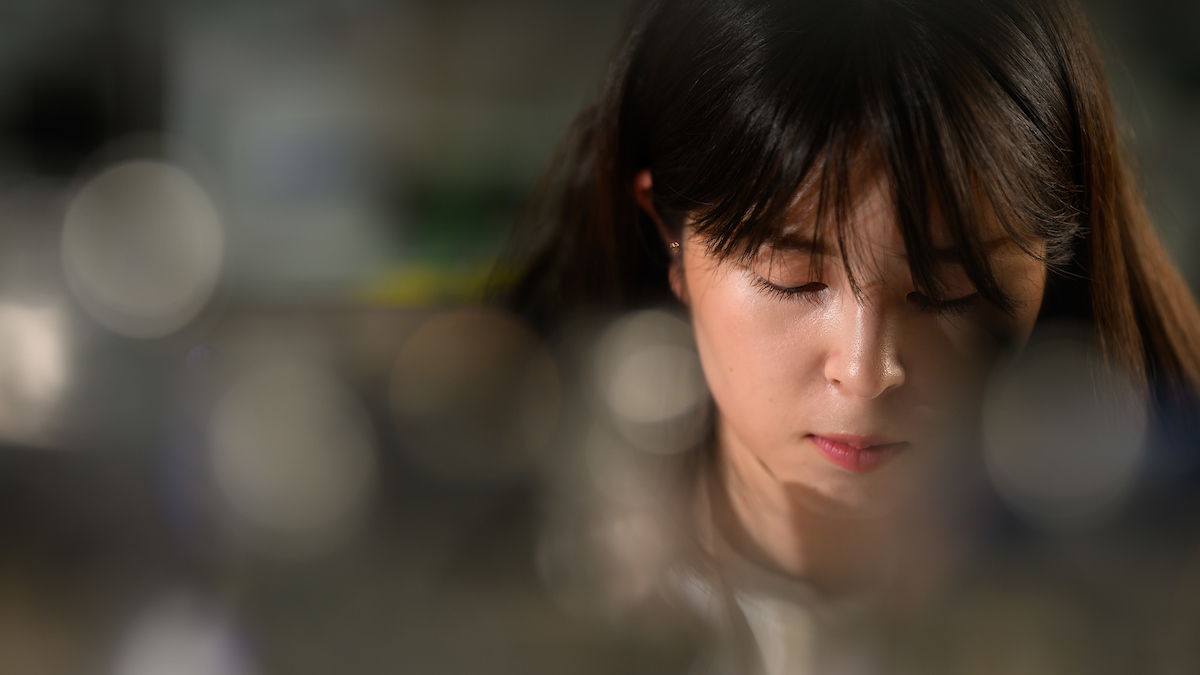After Traumatic Injury, a Remarkable Recovery for an Extraordinary Dog

When Gracie, an 8-year-old English shepherd, was struck by a car in October, the good news was that she survived. The list of bad news was much longer.
She had a large open wound on her abdomen and inner thighs, multiple leg fractures and a displaced hip. Gracie’s owner, Robin Hudson, rushed her to her local veterinarian, who put the dog on an IV and referred her to the NC State Veterinary Hospital.
“The vet tech from our vet’s office, holding an IV, rode with us to the ER,” Hudson says. “She was really banged up, with a gash from her chest to her knees, 18 inches long and 10 inches wide.”
The emergency room team considered amputating her left leg and using the skin from that leg to cover her open wound so it would heal more rapidly. However, Gracie also had injuries in her right leg and hip that could have led to impaired mobility in her remaining leg.
Hudson opted to have her wounds managed medically while clinicians were able to more safely address her orthopedic injuries. This required not only bandaging Gracie’s wounds, but treating her for infection, fever, pain, nutrition and joint stability.
“She was in intensive care for three weeks,” Hudson says. “The first 10 days were a roller coaster. My heart stopped every time the phone rang.”
But something else was happening that made the situation special. The medical team was being charmed by Gracie’s sweet, patient and relaxed personality. “Everyone there loves her,” Hudson adds. “They do amazing things in ICU.”
After Gracie had been in the hospital for 11 days, her condition stabilized and her wounds sufficiently healed to proceed with the orthopedic surgery. Following surgery, the most pressing issue was to determine how to treat Gracie’s extensive laceration and prevent her from developing sepsis.
The job fell to Sarah Townsend, assistant professor of soft tissue and oncologic surgery. She performed the first wound VAC surgery — VAC stands for vacuum-assisted closure — on Gracie’s abdominal wound. Several more would follow as the wound got smaller.
Wound VAC is a method of decreasing air pressure around a wound to assist the healing. It’s also referred to as negative pressure wound therapy. During a VAC procedure, a foam bandage is placed over an open wound, and a vacuum pump creates negative pressure around it. The procedure dramatically shortens the healing process, stimulating the development of new tissue and blood supply while reducing excess fluid in a chronic wound.
“In 10 days the wound was 50% healed,” says Townsend. She said wound VAC surgery is generally available only in referral hospitals like NC State’s.

The wound VAC had to be replaced periodically, and both Townsend and Valery Scharf, assistant professor of soft tissue and oncologic surgery, handled the procedures. A second wound VAC was placed on a wound on Gracie’s elbow for several days where surgery had been performed to repair a fracture.
As a result of the surgeries, Gracie was well enough to transition to at-home care by the end of October.
“Her wound was so big that we were told that would be the biggest challenge,” Hudson says. “Normally, it would heal 1 millimeter per day with 10 or 11 months of serious wound care until it’s small enough to put a bandage on it. With the wound VAC it went from big to smaller than a coin in 10 days. Phenomenal. It astonished even the ICU experts. Everyone was so amazed at how it worked on her.”
During her time at NC State, Gracie provided some healing services of her own. Hudson reports that members of the medical team said the dog’s happy and peaceful personality had been a morale booster for everyone who worked with her. “She had become a therapy dog for everyone there,” Hudson says.
Scharf says that Gracie was relaxed and friendly throughout her time at the hospital, despite her pain and trauma.
“Every technician, student and doctor became her friend, and she always seemed genuinely happy — and patient — to receive attention in any form, even treatments,” she says. “Robin and I agreed early on that as long as Gracie told us she wanted to keep going with her tail wags and kisses, then we would keep going for her, and she never wavered.”
And how is Gracie today? As good as new, Hudson says.
“She has been back to 100% of her old self since about February,” she says. “When I took her to her regular vet in late February for shots, she wrote at the bottom of the summary, ‘Gracie is amazing!’ That about sums it up. To look at her you would never imagine what she survived.”
~Steve Volstad/NC State Veterinary Medicine


